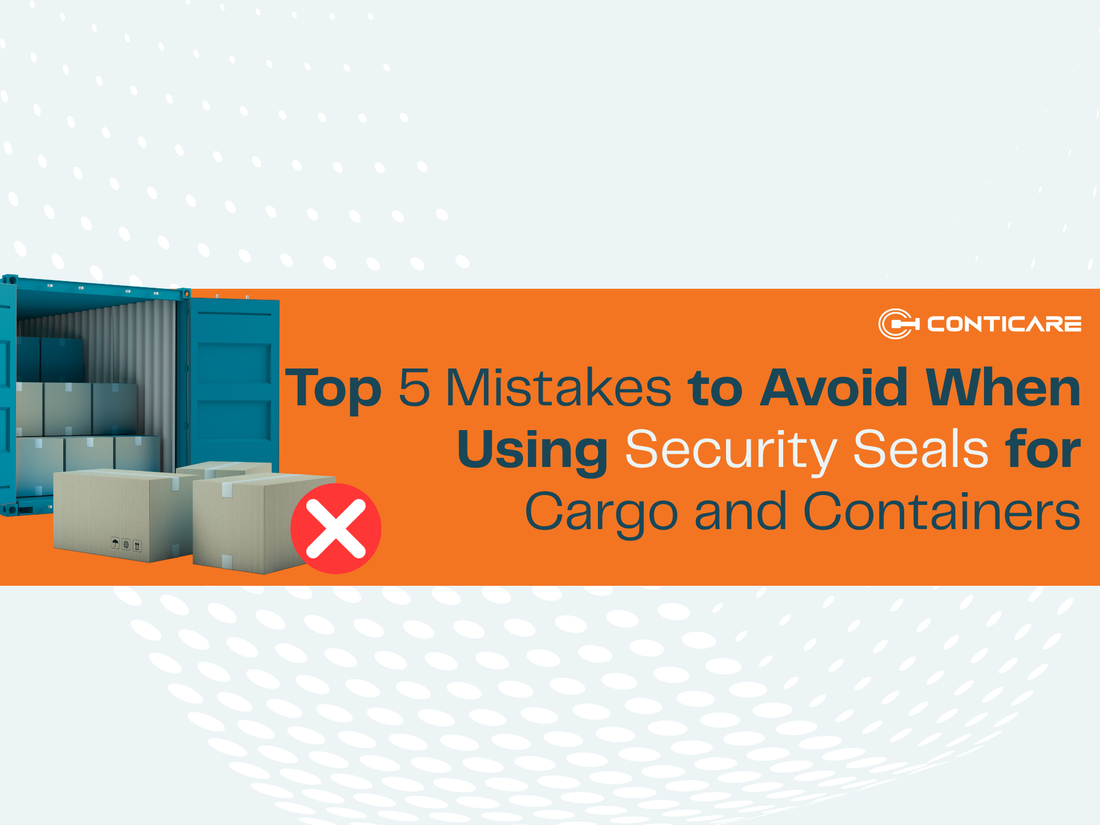
Top 5 Mistakes to Avoid When Using Security Seals for Cargo and Containers
It may appear simple to utilize security seals, but a couple of little mistakes in selecting, using them, or maintaining records can result in severe security failures. Whether you seal containers, trucks, cashbags, or utility appliances, knowing these mistakes can avert unnecessary losses.
These are the 5 most common mistakes businesses make in applying security seals—and how to avoid them:
1. Wrong Choice of Seal Type
The Mistake:
The majority of operators select a seal based on price or looks alone irrespective of the specific security needs of their cargo. For example, using a plastic seal to an overseas container that will be equipped with a bolt seal, or using a low-strength seal to high-risk corridors.
How to prevent it:
Know your cargo and how much security you require. For export or high-risk shipments, employ bolt seals or barrier seals. Cable seals for tankers and trucks, and plastic pull-tight seals for bags or inner storage. If in doubt, discuss with your seal supplier initially.
2. Misuse of the Seal
The Mistake:
It is the act of applying the seal loosely, in the wrong position, or not securing it at all. A poorly applied seal is simple to damage or remove.
How to Prevent It:
Train your staff in proper sealing. Ensure pull-tight seals are closed right up, bolt seals clicked into place, and cable seals properly crimped. Check each seal visually after sealing to ensure it's in place.
3. Failure to record seal numbers
The Mistake:
Failure to stamp the unique serial number of every seal prior to shipping or storage. Without this, there is no method of ascertaining seal switching or tampering in transit.
How to Prevent It:
Always record seal numbers in your shipping records, TMS, or inventory records. These are not only occasional-use seals like bolt and plastic seals but even reusable security padlocks, which are normally allocated serial numbers or unique identification for purposes of traceability.
If padlocks are employed for extra security, maintain a keyholder register and lock numbers to maintain accountability.
4. Recycling Single-Use Seals
The Mistake:
Trying to recycle single-use seals like plastic seals, bolt seals, or wire rope seals. The seals cannot and must not be reused after being sealed or opened.
How to Prevent It:
Identify the difference between throwaway seals (e.g., plastic, bolt, and wire rope seals) and reusable locking devices (e.g., padlocks). Utilize a fresh seal for every fresh shipment, delivery, or storage cycle. Your security process and unbroken tamper-evidence are assured.
5. Disregarding Indications of Tampering
The Mistake:
Ignoring small but important details like cracks in plastic seals, pulled cable seals, worn-off serial numbers, or loose locking devices on padlocks.
How to Prevent It:
Educate your personnel to carry out diligent visual checks at the points of delivery and loading. Even minor damage should be treated seriously. In doubt, treat any questionable or damaged seal as a potential breach and investigate further.
Final Tip:
A security seal is only effective if it's properly chosen, well applied, and closely monitored. By avoiding those easy errors, you'll protect your freight, reduce chances of theft, and keep your customers and logistics providers trusting you. Struggling to figure out or fit the proper seal? Contact our team—we're here to assist you in getting it right.








